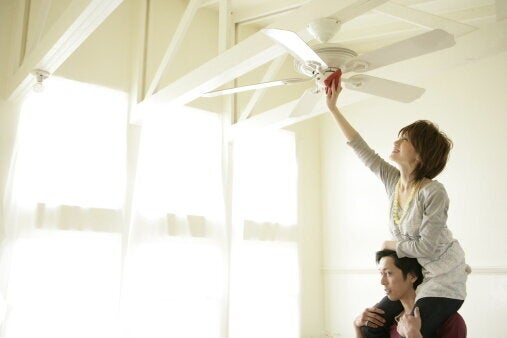
Marie Kondo’s bestselling 2014 book, The Life-Changing Magic of Tidying Up, changed the conversation on home decluttering and organizing. With her KonMari Method of tidying up your home, it’s not enough to pare down to just the things you regularly use; Kondo advocates keeping only what gives you joy. Her fresh approach struck a chord: More than 3 million copies of Life-Changing Magic, translated into 35 languages, have sold worldwide.
Now the Japanese decluttering guru has written a follow-up volume, Spark Joy: An Illustrated Master Class on the Act of Organizing and Tidying Up. The new book answers common questions about her approach, offers more advice about streamlining your home and advises what to do about that hammer you need but don’t love. We share highlights below, including her instructions on folding clothes for storage.
In Spark Joy, Kondo explains her six basic rules of tidying:
- Commit yourself to tidying up.
- Imagine your ideal lifestyle.
- Finish discarding first.
- Tidy by category, not by location.
- Follow the right order.
- Ask yourself if it sparks joy.
Kondo says tidying up your home this way should be done once and completed rather than turned into a never-ending project. She views it as the means to an end — a more joyful life surrounded and supported by things and people you love — rather than an end in itself.
How to Do It
- When you’re ready to tidy up, Kondo says to start with the easiest categories and progress to the more challenging ones.
- Clothing.
- Books and magazines.
- Papers (course materials, credit card statements, manuals, cards, clippings).
- Komono (miscellaneous items such as CDs, stationery, medicines, tools, linens, kitchen tools, cleaning supplies).
- Sentimental items (memorabilia, children’s art, life records, letters, photos).
Discard, Then Store
Starting with clothing, pull all your garments and shoes out of your closets and drawers. Then hold each item in your hands to see how it makes you feel, keeping only those that spark joy. Comparing items against one another can help you decide.
Once you have chosen the things you want to keep — setting aside the rest for giving away, selling, recycling or discarding — the next step is organizing everything.
Kondo’s Basic Folding Method
- Folding clothes for upright storage, so you can see what you have and make the most of your space, is a key element of the KonMari Method. Kondo compares her steps for folding to origami.
- Fold both edges of the body of the garment toward the centre to form a rectangle.
- Fold the rectangle in half or in thirds.
- Fold this in half or in thirds.
The same basic folding principle applies to long-sleeved shirts. She folds long sleeves as in the diagram above to reduce bulk. The process is similar for tops with irregularly shaped sleeves and camisoles with straps: Fold in sleeves and straps, and then fold the garment into a small rectangle. Camisoles and other garments with silky or slippery fabric can then be rolled up.
Kondo suggests folding pants made of cotton, such as jeans, to put in drawers but hanging up suit pants and those with a centre crease. To fold pants, lay one pants leg over the other, then fold both legs up toward the waistband but not quite touching it, and then fold this in thirds. If the seat sticks out, you can fold it in as shown above.
You can either hang or fold dresses and skirts. Undergarments can be folded or folded and rolled up.
A Marie Kondo video tutorial shows how to fold these garments and more.
Kondo applies the same principles of tidying to everything around the house. Before you start organizing in the kitchen, she says, take a fresh look at your eating implements, cooking tools and food items to see if they spark joy. Kondo advocates storing everything in cupboards and drawers, and keeping your countertops clear, especially near the stove and sink, so the items won’t be splashed by oil and water. She came to this view after observing restaurant cooks arrange their spaces not for ease of use but for ease of cleaning.
If you are saving the “good” dishes that you love for special occasions, consider putting them into your daily rotation. Drawer dividers and small boxes keep serving utensils and other tools neat and organized.
What about utilitarian objects that don’t exactly inspire joy? Kondo says you may just need to look at them differently. “A simple design that puts you at ease, a high degree of functionality that makes life simpler, a sense of rightness, or the recognition that a possession is useful in our daily lives — these, too, indicate joy.”
Still feeling less than joyful about that household tool? Shower it with praise and appreciation. “The things we need definitely make our lives happier. Therefore, we should treat them as things that bring us joy.” But if it’s still not doing anything for you, let it go. You’ll find something better to take its place.
“Remember that you are not choosing what to discard but rather what to keep,” writes Kondo. “Keep only those things that bring you joy. And when you discard anything that doesn’t, don’t forget to thank it before saying good-bye. By letting go of the things that have been in your life with a feeling of gratitude, you foster appreciation for, and a desire to take better care of, the things in your life.”
More on Houzz
Also on HuffPost
